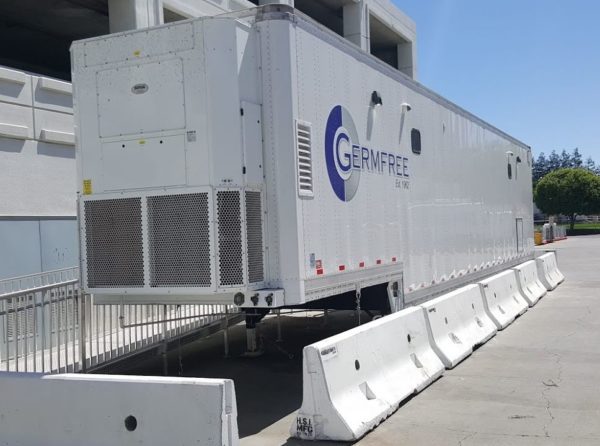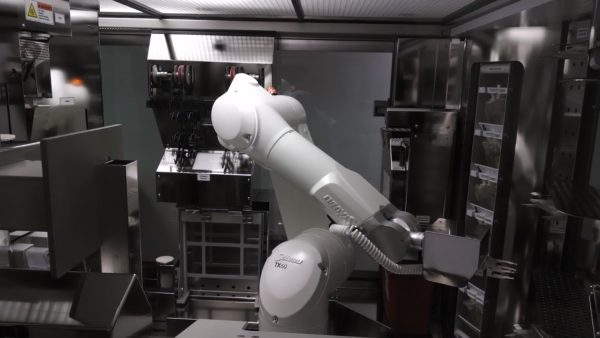
Construction on pharmacy cleanrooms is at an all-time high in California. Every hospital I know is either renovating a sterile compounding area — cleanroom or SCA — or building a new one. Why? Because of USP General Chapter <800>, of course. Never have I seen so little cost so much. That little 19-page document has sent shock waves throughout the pharmacy world and created more chaos than anything I have witnessed in my 20 plus year career. Whether or not the changes called for in the new chapter will improve patient care and worker safety remains to be seen. That’s a blog post for another time.
As pharmacies begin renovating existing sterile compounding areas, or building new ones, there may be a time when they find themselves without a suitable area to make Compounded Sterile Preparations (CSPs). Some pharmacies have the physical space and financial resources to build new sterile compounding areas without vacating their existing space. Others do not.
For those that don’t, there are few options. They can potentially get someone else to handle their CSP production while under construction, or they could give everything an immediate-use BUD. Neither is a great option, but options they are.
Enter the Mobile Sterile Compounding Unit (MSCU) built by Germfree — aka Mobile Compounding Unit (MCU), “Pharmacy Trailer”, “Rx Trailer”, “the trailer”, or as the manufacturer likes to call it, “Rental Compounding Trailer”. I prefer MCU.
The MCU is basically a semi-truck trailer with a fully functional pharmacy cleanroom inside. Germfree describes it as a “turnkey rental pharmacy/cleanroom for hospital facility renovations”. I wouldn’t go as far as to call it turnkey, but it is close.
The Germfree MCU has three distinct work zones:
1) ISO Class 7/8 anteroom with a small area for personnel to don Personal Protective Equipment (PPE). The area has lockers for storing PPE, a hand washing sink, and a gowning bench.
2) ISO Class 7 Negative Pressure Buffer Room (HD room) with Class II, Type A Biological Safety Cabinets, storage space, and integrated refrigerator and freezer. Preparation areas are all stainless steel.
3) ISO Class 7 Positive Pressure Buffer Room (non-HD room) with Laminar Airflow Workstations, storage and integrated refrigerator and freezer. As with the HD room, preparation areas are stainless steel.
The trailer has a dedicated HVAC system for temperature and humidity control, an auxiliary generator should you require emergency power, on-board fresh water to provide for a sink, a gray water tank to collect water for disposal, data ports for computers and phones, and a host of cameras with a digital video recorder (DVR) for security.
I had the opportunity in my current position to oversee the implementation of a MCU from purchase to fully operational cleanroom. I am only a few weeks from signing off on the project. Only a bit of regulatory paperwork remains.
During my time with the MCU I have formed some opinions, which I present to you here.
Pros:
- Ready-to-use, sort of. While it takes a little bit of work to get a MCU up and running, they truly are close to being a “turnkey cleanroom”.
- ISO compliant HD and non-HD buffer rooms. Unlike an SCA, there is no limitation to what can be made in the MCU. It is fully capable of handling any type of CSP.
- Self-contained, mostly. Once the MCU is tied to water and electricity, pharmacy personnel can work as if they were in any other pharmacy cleanroom.
- It is quicker and cheaper than many remodels. I don’t mean to say that MCUs are inexpensive, but I would wager that the cost is less than most major pharmacy remodels or the cost of building a completely new cleanroom.
- The MCU is nice. Regardless of how you feel about the idea, one thing is for sure, the Germfree MCUs are nice and well-built. Honestly, the HD and non-HD buffer rooms inside the trailer are nicer than many pharmacy cleanrooms I have been in. You need not take my word for it, go visit one yourself.
- Same hoods that you find in the pharmacy. The same Germfree BZ and BBF hoods you find in pharmacy cleanrooms can be found in the MCU.
- Lease or buy. Depending on your needs, Germfree offers both.
Cons:
- One-year maximum use in California. This has nothing to do with Germfree but rather the state I live in. California will only give permission to use these trailers for 12 months. This seems a bit silly to me. Don’t people use trailers as permanent homes? I believe so. As mentioned above, the MCUs from Germfree are nicer than some cleanrooms I’ve been in. Meh, when in Rome…
- Requires a “flex” or “alternate means of compliance (AMOC)” from state agencies, at least in California -a bit of extra paperwork.
- Regulatory scrutiny, again California specific. All the state agencies — OSHPD, CDPH, Board of Pharmacy — have taken an aggressive approach to these trailers, which makes getting them up and running a bit of a hassle. Be prepared to do a lot of extra paperwork, including extended policies and procedures, additional trailer-specific training and training, and so on.
- Requires water, electricity, and internet. This is where calling the trailer self-contained becomes strained. Yes, the trailer has a fresh-water tank and a generator, but those are temporary solutions. Should you need the trailer for an extended period, you will have to find more permanent water and electricity options.
- Gray water tank. Water used to wash hands has to go somewhere. In this case, it goes to a gray water holding tank. Obviously, the tank has to be emptied when it gets full. Depending on how prolific your CSP production is, that could be more than once a week.
- No restroom. Cross your legs or leave the trailer because there is no bathroom.
- Customer support/service. I am sure this will improve over time, but it has been less than optimal.
- Limited availability. Apparently, it takes a while to build an MCU, so if you are in the market for one you should look into it as soon as possible.






